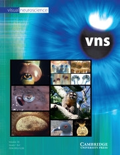
VISUAL NEUROSCIENCE
Scope & Guideline
Transforming Perception Through Neuroscience
Introduction
Aims and Scopes
- Neurophysiology of Visual Processing:
The journal publishes research on the neurophysiological aspects of visual processing, including the study of retinal cells, visual pathways, and cortical processing. - Visual System Evolution:
It explores the evolutionary aspects of visual systems across different species, providing insights into the adaptations and functional diversifications of visual mechanisms. - Retinal Pathologies and Disorders:
Research concerning various retinal diseases, such as glaucoma and diabetic retinopathy, is a core focus, emphasizing the impact of these conditions on visual function. - Experimental Techniques in Vision Science:
The journal encourages the use of advanced experimental methodologies, including electrophysiological recordings, imaging techniques, and computational modeling to understand visual processing. - Cross-Species Comparisons:
A unique contribution of the journal is its emphasis on comparative studies between different species, facilitating a broader understanding of visual mechanisms and their evolutionary significance.
Trending and Emerging
- Molecular Mechanisms in Retinal Health:
A surge in studies examining molecular pathways and their roles in retinal health and disease has been observed, highlighting the importance of understanding underlying biological processes. - Impact of Aging on Visual Function:
Research focusing on how aging affects visual function and processing is increasing, indicating a growing recognition of the implications of age-related changes in vision. - Neuroinflammation and Retinal Disorders:
The exploration of neuroinflammatory processes in retinal diseases such as diabetic retinopathy is a rising theme, underscoring the importance of inflammation in visual pathologies. - Comparative Visual Neuroscience:
There is an emerging trend in comparative studies across species, which enhances our understanding of visual systems by examining evolutionary adaptations and functional diversity.
Declining or Waning
- Behavioral Studies in Vision:
There has been a noticeable decrease in publications focusing on behavioral aspects of vision, suggesting a shift towards more molecular and cellular studies. - Macroscopic Imaging Techniques:
Research utilizing large-scale imaging techniques for understanding visual systems appears to be waning, possibly due to the increasing sophistication of smaller-scale methods. - Neuroanatomical Mapping:
Although still relevant, detailed neuroanatomical mapping studies have become less frequent, as more emphasis is placed on functional studies and dynamic imaging.
Similar Journals

Eye and Brain
Advancing the frontiers of vision and perception.Eye and Brain is a distinguished open-access journal published by DOVE MEDICAL PRESS LTD, specializing in the interdisciplinary fields of ophthalmology and neuroscience. Since its inception in 2009, the journal has been committed to disseminating high-quality research that enhances understanding of visual perception and neural processes related to vision. With an impressive Scopus ranking in the 92nd percentile for Ophthalmology and the 89th percentile for Neuroscience Sensory Systems, Eye and Brain stands at the forefront of scientific inquiry, providing essential insights into cellular and molecular mechanisms underlying vision and sensory integration. The journal is dedicated to publishing articles that address critical challenges and advancements in these fields, making it a vital resource for researchers, professionals, and students alike. Situated in New Zealand, Eye and Brain not only represents a global collaboration in the eye and brain sciences but also offers a platform for groundbreaking research in the evolving landscape of sensory systems. Submissions are welcomed from across the globe, encouraging a broad spectrum of viewpoints and methodologies.
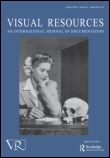
Visual Resources
Elevating the Discourse in Visual Arts and MuseologyVisual Resources, an esteemed journal published by Routledge Journals, Taylor & Francis Ltd, serves as a vital platform for scholarly research in the fields of Museology and Visual Arts and Performing Arts. With an ISSN of 0197-3762 and an E-ISSN of 1477-2809, this journal has navigated the academic landscape since its inception in 1980, continuing to amplify critical dialogues up to 2024. Positioning itself within category quartiles as Q3 for both museology and visual arts, the journal ranks at #302/667 in the Visual Arts and Performing Arts category and #41/83 in Museology according to Scopus, reflecting a significant yet competitive standing. Although not designated as Open Access, the publication remains accessible through institutional subscriptions, catering to a diverse audience of researchers, professionals, and students. By disseminating pioneering research and innovative methodologies pertinent to visual culture and museum practices, Visual Resources plays an indispensable role in advancing knowledge in its disciplines and connects academia with contemporary practice.

IMAGE AND VISION COMPUTING
Illuminating the path of progress in image analysis and recognition.Image and Vision Computing, published by Elsevier, serves as a leading international journal focused on the dynamic fields of computer vision, pattern recognition, and signal processing. With its esteemed Q1 category rankings in these areas and an impressive standing in Scopus metrics, where it ranks 19th in Computer Vision and 23rd in Signal Processing, this journal has firmly positioned itself at the forefront of academic research and innovation. Established in 1983, it continues to publish cutting-edge research that drives advancements in technology and applications across various domains. The journal is committed to disseminating high-quality, peer-reviewed articles that address significant challenges and propose novel solutions, making it an essential resource for researchers, practitioners, and students alike. While not an open access journal, Image and Vision Computing offers a wealth of valuable insights into the ever-evolving landscape of visual computing technologies.

VISION RESEARCH
Advancing the frontiers of visual science.VISION RESEARCH, published by PERGAMON-ELSEVIER SCIENCE LTD, is a leading journal in the field of visual sciences, focusing on the diverse aspects of ophthalmology and sensory systems. With a rich publication history dating from 1961 and extending into 2024, this journal has become a cornerstone for researchers and practitioners alike, offering critical insights into vision science. The journal holds a commendable Q2 ranking in Ophthalmology and a Q3 ranking in Sensory Systems, evidencing its significant contribution to these fields. VISION RESEARCH also boasts a respectable Scopus ranking, placing it in the 66th percentile for Ophthalmology and 46th percentile for Neuroscience. Although it is not an Open Access journal, readers can access its impactful research through various academic institutions. With its emphasis on innovative research and developments in understanding visual perception, VISION RESEARCH is an essential resource for scientists, clinicians, and students dedicated to advancing the understanding of vision and its associated mechanisms.
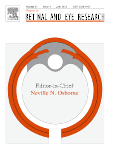
PROGRESS IN RETINAL AND EYE RESEARCH
Pioneering Discoveries in OphthalmologyPROGRESS IN RETINAL AND EYE RESEARCH, published by PERGAMON-ELSEVIER SCIENCE LTD, is a premier journal dedicated to the advancement of knowledge in the fields of ophthalmology and sensory systems. With an impressive impact factor and a Q1 category ranking in both Ophthalmology and Sensory Systems as of 2023, this journal exemplifies excellence in research dissemination. Given its stature, it ranks #1 out of 137 in Ophthalmology and #1 out of 42 in Neuroscience - Sensory Systems, placing it within the top percentile of scientific publications in these domains. The journal has been actively contributing to the field since its inception in 1994 and continues to be a vital resource for researchers, clinicians, and students seeking the latest insights and breakthroughs in the understanding of retinal diseases and eye health. While it maintains a traditional subscription model, the journal remains committed to publishing high-quality, peer-reviewed articles that drive forward the frontiers of eye research and therapeutic innovation. With its strong scientific rigor and a vast array of articles, PROGRESS IN RETINAL AND EYE RESEARCH is indispensable for anyone invested in the study of visual sciences.
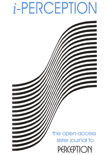
I-Perception
Illuminating the Science of How We PerceiveI-Perception is a leading open-access journal published by SAGE Publications Ltd, specializing in the intricate interplay between perceptual processes across various disciplines such as Artificial Intelligence, Experimental and Cognitive Psychology, Ophthalmology, and Sensory Systems. With an ISSN of 2041-6695, this UK-based journal has been a vital resource since its inception in 2010. I-Perception occupies esteemed positions within several academic categories, including a Q2 ranking in Ophthalmology and Q3 rankings in both Artificial Intelligence and Experimental and Cognitive Psychology. These metrics highlight the journal’s relevance and impact, particularly in fostering interdisciplinary collaborations among researchers and practitioners. Accessible online, I-Perception encourages the dissemination of innovative findings and theoretical advancements, making it an essential platform for those passionate about understanding perception in its myriad forms. The journal's commitment to excellence is further reflected in its Scopus rankings, showcasing its influence within the respective realms of Medicine, Neuroscience, and Computer Science.
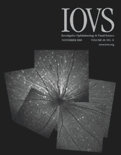
INVESTIGATIVE OPHTHALMOLOGY & VISUAL SCIENCE
Pioneering research for a clearer tomorrow.Investigative Ophthalmology & Visual Science (IOVS) is a leading academic journal published by the Association for Research in Vision and Ophthalmology, dedicated to advancing the field of ophthalmology and visual science. With an impressive impact factor and ranking in the Q1 category for both Ophthalmology and Sensory Systems, IOVS is well-respected for disseminating cutting-edge research and innovative discoveries. Established in 1977, this Open Access journal allows for broad accessibility to pioneering studies, fostering collaboration among researchers, clinicians, and students. The journal has consistently maintained high visibility in the academic community, evidenced by its robust rankings in Scopus, including Rank #16 in Ophthalmology. As it continues to pave the way for future developments in the understanding and treatment of ocular diseases, IOVS serves as an invaluable resource for those immersed in the complex field of visual science.
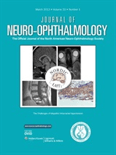
JOURNAL OF NEURO-OPHTHALMOLOGY
Unveiling Insights in Neuro-OphthalmologyJOURNAL OF NEURO-OPHTHALMOLOGY is a premier academic publication dedicated to the interdisciplinary study of neuro-ophthalmic conditions, providing a vital platform for the dissemination of groundbreaking research and clinical insights. Published by Lippincott Williams & Wilkins, this journal has established itself within the field, maintaining a strong impact factor and demonstrating a significant commitment to both the medical and neurological communities, categorizing in Q2 for Medicine and Ophthalmology, and Q3 for Neurology (clinical). With an ISSN of 1070-8022 and an E-ISSN of 1536-5166, the journal boasts a rich history from its inception in 1994, extending its reach to 2024. Although it does not operate under an open-access model, it still prioritizes the accessibility of vital research findings to healthcare professionals, researchers, and students alike. Located in Philadelphia, PA, USA, the JOURNAL OF NEURO-OPHTHALMOLOGY continues to play an essential role in advancing knowledge, fostering collaboration, and encouraging the exchange of ideas to improve patient care and outcomes in the realm of neuro-ophthalmology.

Eye and Vision
Exploring the depths of ocular research and clinical excellence.Eye and Vision, published by BMC, is a leading open-access journal dedicated to the dynamic field of ophthalmology and visual sciences. With its ISSN 2326-0246 and E-ISSN 2326-0254, the journal has established itself as a premier platform for innovative research and clinical studies, achieving impressive rankings in 2023 as Q1 in both Health Professions (Miscellaneous) and Ophthalmology categories. The journal's commitment to accessible knowledge since its transition to open access in 2015 enhances its global reach, allowing researchers, clinicians, and students to share and access top-tier studies and advancements in the field. Located in the United Kingdom and delivering influential insights from 2014 through to 2024, Eye and Vision holds significant relevance, with a Scopus ranking placing it in the 99th percentile for Health Professions and the 93rd percentile for Ophthalmology, making it an essential resource for those looking to stay at the forefront of eye research and vision science.

BRAIN AND LANGUAGE
Unraveling the Mysteries of Language and the BrainBRAIN AND LANGUAGE is a premier journal published by Academic Press Inc Elsevier Science, dedicated to fostering scholarly communication in the fields of Cognitive Neuroscience, Linguistics, Psychology, and Speech and Hearing. With its ISSN 0093-934X (Print) and 1090-2155 (Online), the journal has established a significant presence since its inception in 1974, continuing to provide valuable insights into the intricate relationship between brain function and language processing. This journal is highly regarded, boasting a 2023 ranking of Q1 in Linguistics and Language, reflecting its influential contributions to the field, alongside Q2 rankings in categories such as Cognitive Neuroscience and Experimental Psychology. With a rigorous peer-review process, it serves as an essential resource for researchers and professionals seeking to deepen their understanding of language mechanisms and their cognitive underpinnings. Despite not being an Open Access journal, BRAIN AND LANGUAGE ensures that its articles are widely accessible and of high quality, making it an indispensable platform for both emerging and established scholars aiming to expand the boundaries of research in language and cognition.